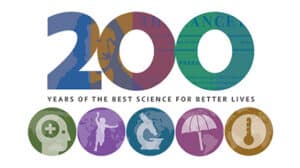The coronavirus has now been declared airborne, and this requires different measures to prevent spread
After a long-standing debate on whether the coronavirus is airborne, the World Health Organization and the US Centers for Disease Control and Prevention confirmed this week, that the coronavirus is indeed transmissible via air.
This week, we interview Dr Maulik Patel, Physician and Consultant at Mediaid Healthcare LLP to understand what it means for COVID to be airborne, and what implications it has on the COVID-19 measures we have adopted thus far.
How do viruses spread?
Viruses are transmitted from person-to-person through three main pathways:
– Respiratory droplets: When an infected person within 3 to 6 feet sneezes or coughs, there is a risk of exhaling droplets that when inhaled causes the virus to spread from person-to-person. Like with Influenza, droplets were identified as the main source of spread for the coronavirus.
– Contaminated surfaces: Surfaces such as door knobs and other frequently-touched surfaces are likely to be infected through respiratory droplets or touch.
– Aerosols: Airborne viruses spread more easily as you may become infected by breathing in air when close to an infected person. In airborne diseases, particles stay in the air for a period and can infect a person walking in the same space. Measles and chickenpox are airborne diseases, and therefore, considered “extremely infectious”, as you do not need to come in close contact to get infected.
Dr Patel emphasizes that while droplets are large particles easily captured, aerosols are much smaller and hard to detect.
“Droplets are classically larger entities (>5 μm) that drop to the ground by force of gravity, typically within 3 to 6 feet, but aerosols are smaller particles (≤5 μm) that rapidly evaporate in the air, leaving behind droplet nuclei that are small enough and light enough to remain suspended in the air for hours, similar to pollen.”
Evidence from early studies on COVID being airborne
At the time of the COVID-19 outbreak, several questions were raised about whether the virus was airborne. Until now, health authorities, both local and global; declared that there was no evidence suggesting that the virus was airborne, and that it primarily spread through respiratory droplets when in close contact with an infected person.
While more systematic studies have been conducted on this topic more recently, case studies of air transmission have been reported since January 2020.
On 24 January 2020, contact tracing in China found that 10 people had dined on three separate tables at a restaurant in Guangzhou. Despite having no interaction through close contact or surfaces, they had tested positive. The study had suggested that infectious particles were carried in the air, indicating that there is a high risk of the virus transmitting through the air.
Other cases were reported in congregations at places of worship. A study in Australia suspected that the coronavirus spreads through the air after an analysis of a case study where the infected were sitting up to 50 feet apart.
In July 2020, a group of scientists signed an open letter requesting the World Health Organization to “recognize the potential for the airborne spread of COVID-19”. However, it was maintained that the virus was not airborne.
Yes, we recognize now that COVID is airborne
The World Health Organization’s recent declaration that COVID-19 could be airborne comes after a systematic review of published in the Lancet showed evidence from multiple studies and patterns of spread of the virus which indicate that it is airborne.
The review is supported by evidence of people getting infected without social contact, and the presence of a significant number of asymptomatic which means that a person who is not coughing or sneezing is still transmitting the virus through aerosols.
Dr Patel adds, “Studies using specialized imaging to visualize respiratory exhalations have suggested that respiratory droplets may get aerosolized or carried in a gas cloud and have horizontal trajectories beyond six feet with speaking, coughing, or sneezing. Other studies have identified viral RNA in ventilation systems and in air samples of hospital rooms of patients with COVID, including patients with mild infection; attempts to find viable virus in air and surface specimens in health care settings have only rarely been successful.”
He also points to the potential long-distance transmission of airborne viruses.
“Experimental studies show that SARS-CoV-2 can also be transmitted longer distances through the airborne route – that is, the inhalation of particles that remain in the air over time and distance, but the extent to which this mode of transmission has contributed to the pandemic is controversial. Scattered reports of SARS-CoV-2 outbreaks in restaurants or on a bus have highlighted the potential for longer distance airborne transmission in enclosed, poorly ventilated spaces.”
The systematic review concludes that, “Airborne transmission of respiratory viruses is difficult to demonstrate directly. Mixed findings from studies that seek to detect viable pathogen in air are therefore insufficient grounds for concluding that a pathogen is not airborne if the totality of scientific evidence indicates otherwise.”
What are the implications of COVID being airborne?
Understanding how a virus spreads is critical in determining what precautions governments and individuals across the world need to take to contain the virus and protect themselves.
Dr Patel explains, “If COVID is primarily spread by respiratory droplets, wearing a medical mask, face shield, or keeping 6 feet apart from other individuals should be adequate to prevent transmission. If, however, it is carried by aerosols that can remain suspended in the air for prolonged periods, medical masks, shields and social distancing measures would be inadequate.”
The systematic review urges that governments will now need to take additional measures to prevent the spread of COVID, “Reducing airborne transmission of virus requires measures to avoid inhalation of infectious aerosols, including ventilation, air filtration, reducing crowding and time spent indoors, use of masks whenever indoors, attention to mask quality and fit, and higher-grade protection for health-care staff and front-line workers.”
With leading health organizations acknowledging the air transmissibility of the coronavirus, it will be crucial for governments to alter their COVID-19 measures, focusing now on restricting crowded indoor spaces including places of worship, stadiums and movie theatres. Additionally, they will need to investment in better protection equipment for frontline workers, to educate the public on measures pertaining to indoor mask usage, restricted indoor gatherings, and the risks of shared ventilation and air filtration systems.


















Add Comment